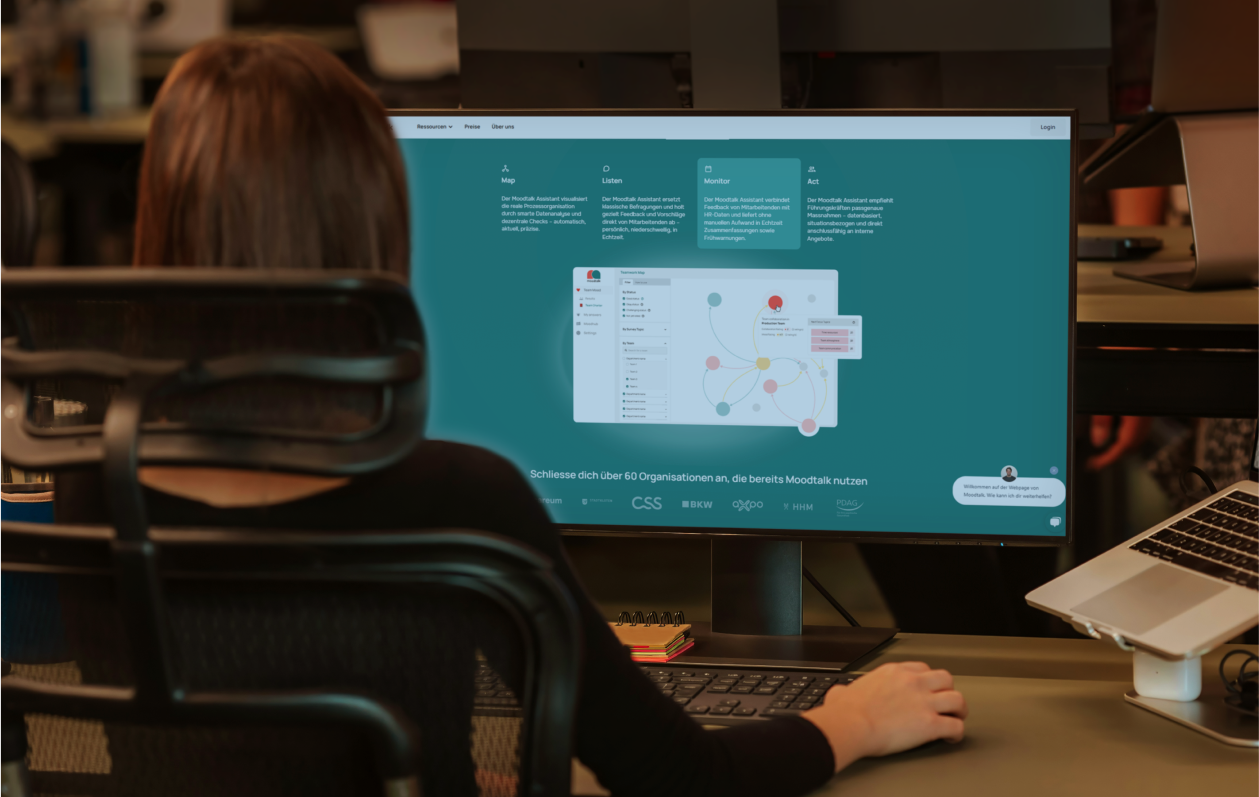How does a positive team climate actually develop—and what can you do when the mood in the team starts to shift? That was the focus of the 2nd Moodtalk Meetup, which took place online on April 4, 2025. Under the title “How to Strengthen Collaboration,” we explored key questions around team dynamics, mood shifts, and psychological safety—with plenty of practical insights and space for exchange.
Insights from Aviation – with Tobias Fietze
Joining as a guest: Tobias Fietze, Airbus captain at a major Swiss airline and consultant for error management, organizational culture, and team processes at emocia. He brought a unique perspective: what works every day in cockpits can also be applied to teams in companies. Clear communication, structured decision-making processes, and a strong sense of responsibility are vital in aviation—and equally essential for successful team collaboration.
His core message: Team climate doesn’t just happen—it must be actively shaped.
5 Common Challenges and How to Tackle Them
During the meetup, five classic challenges frequently seen in teams were addressed. For each situation, practical strategies were shared—whether you're a team member or a leader:
1. Declining or Persistently Low Mood Levels
When the team’s energy level keeps dropping, it’s worth taking a closer look:
- What topics are being avoided?
- Are people just pushing through despite underlying tensions?
Tobias’ advice: Call a stop, gather feedback, and define new paths together. Tools like Moodtalk help make team mood visible and allow early intervention.
Key insight: Psychological safety is the foundation of any strong team climate. Without it, no one feels safe enough to communicate openly.
2. Differing Mood States Within the Team
While some team members are highly motivated and pushing ahead, others withdraw. But why?
Often, it's because individual needs aren’t being equally met. Tobias’ recommendation: Use a competency and needs analysis—for example, via Moodtalk’s team wiki. This makes it visible what each person needs to reach their full potential.
Key insight: Teams function best when different needs are acknowledged and respected—not when everyone thinks or acts the same.
3. Challenging Group Dynamics
Sometimes, there’s simply no common ground. In aviation, clearly defined roles, rules, and goals ensure smooth coordination.
Translated to teams: Shared principles and a collective mission make all the difference. The Moodtalk Wiki helps teams make these foundations visible and binding.
Key insight: Clear ground rules and a shared goal provide direction—especially during uncertain or conflict-prone phases.
4. Conflicts Between Individual Team Members
Different personalities, communication styles, or values can create friction. What matters is whether the team embraces an open conflict culture—or sweeps tensions under the rug.
External support (e.g., mediation) can help when negative patterns have become entrenched. Moodtalk helps identify early warning signs and encourages structured dialogue.
Key insight: Conflicts aren’t the problem—a lack of communication culture is. Those who speak up early prevent escalation.
5. Formation of Cliques Within the Team
“Us vs. them”—when teams split into subgroups, overall performance suffers. Tobias pointed to findings from social psychology: shared goals help bridge existing divides. What’s crucial is whether the team sees a higher purpose that prioritizes unity over division.
Key insight: Cliques can’t be resolved by appealing to team spirit alone—they require real connection and shared challenges.
Our Conclusion: Team Climate Is No Coincidence
The meetup clearly showed: a strong team climate doesn’t happen by chance. It’s the result of conscious decisions, the courage to reflect, and tools that support teams in the process.
Moodtalk makes moods, needs, and principles visible—and gives teams a shared language for the things that often go unspoken.
Here is the full video of Tobias’s theoretical input.
Sources










.jpg)













